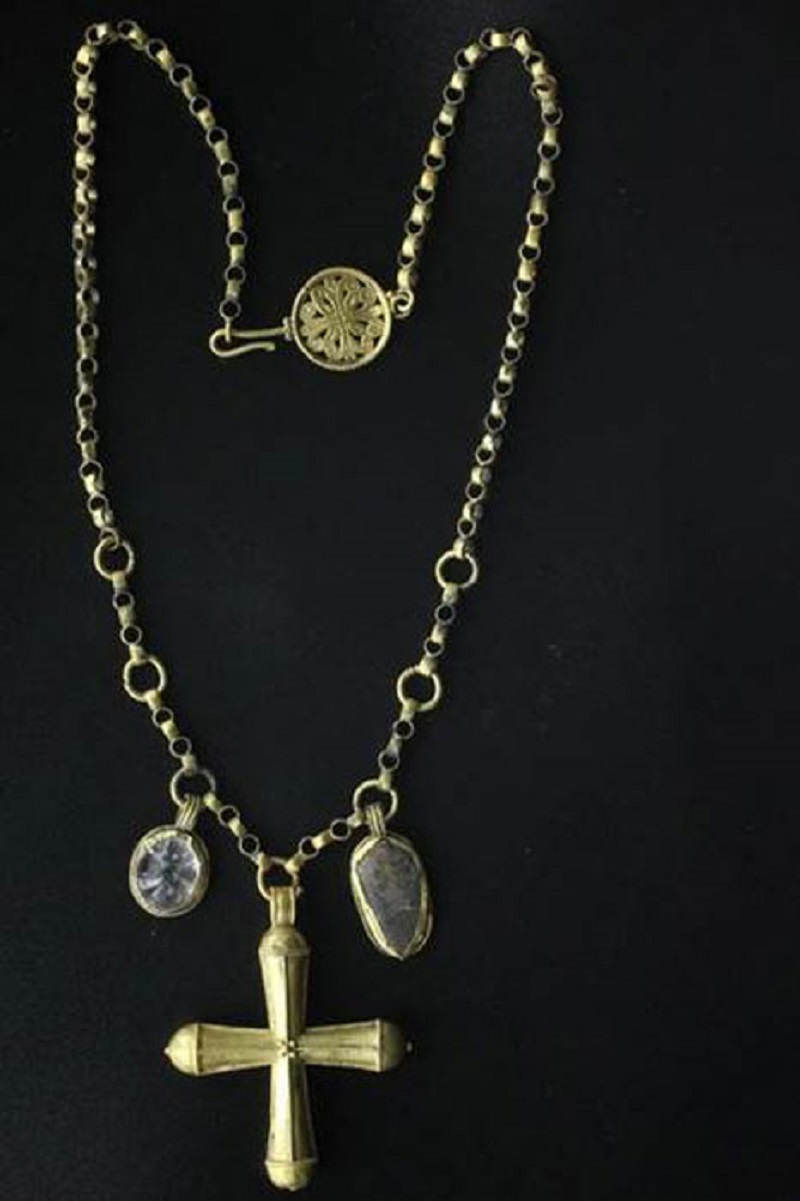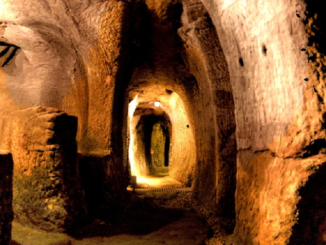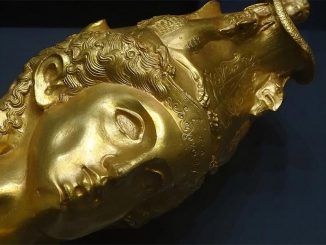In February 2021, a restoration project was launched under the auspices of Ümit Aydınlıoğlu, associate professor at Mersin University, with support from the Ministry of Culture and Tourism, General Directorate of Cultural Heritage and Museum, Turkey. The goal was (and is) to bring back glory to the ancient city of Uzuncaburç (Diocaesarea), a Greco-Roman town located in Cilicia Trachea in Turkish Asia, Hurriyet Daily News reported. During this very excavation, 19 artifacts dating back 1,400 years ago were unearthed in the last week of 2021! And it all has to do with the Byzantine-Sassanid War of 602-628 AD.
Byzantine-Sassanid War artifacts found in rapid succession in late 2021 include a skeleton, a necklace, pendants, necklaces, earrings and an amulet with bracelets and necklace. All of these were discovered in an interior room during the restoration and excavation of the 23-meter (75.4 feet) high tower in the old city. The tower was built in Uzuncaburç in the late 6th or early 7th century AD, Arkeo News reported.
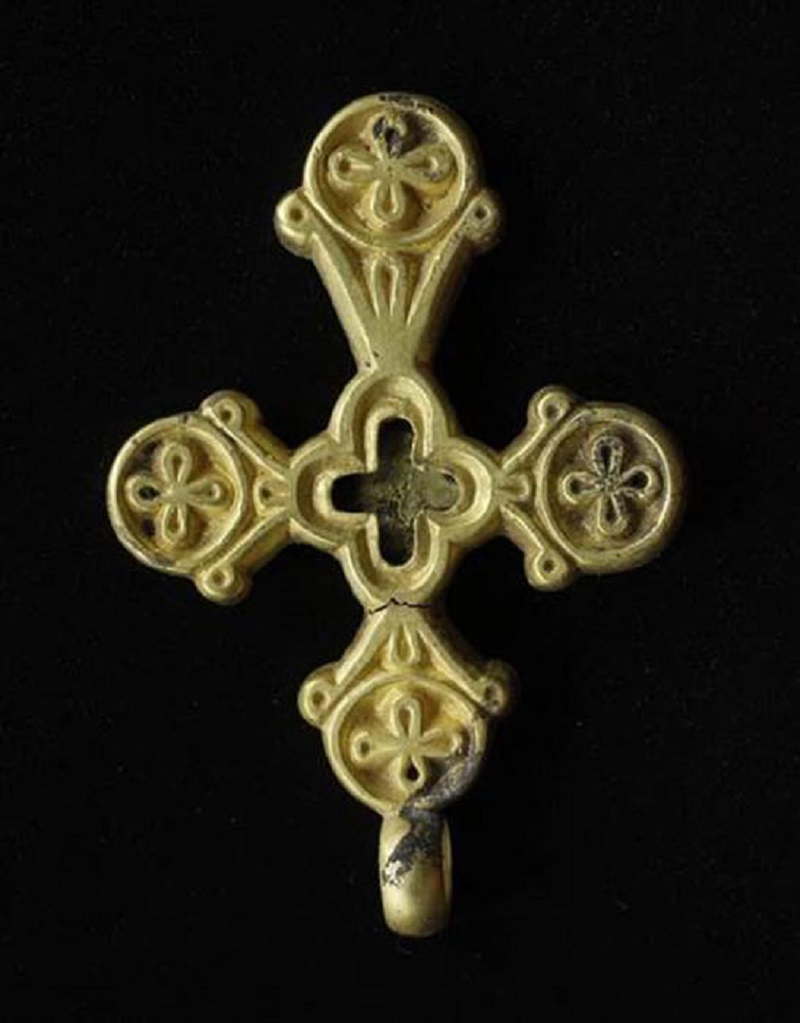
Close-up of one of the artifacts of the 2021 Byzantine-Sassanid War found in Mersin province, Türkiye. (Anadolu Agency)
Interesting Finds and the Byzantine-Sassanid War
Gökhan Yazgı, Director General of Cultural Heritage and Museums, speaking to Turkey’s state press agency Anadolu Agency (AA) said:
“The basis of archeology is the excitement of solving a mystery. With such discoveries, all our colleagues are excited to try to describe the story of this, the events that took place on that time. That’s why these objects are so important to us. These discoveries have shed light on them. When we solve the mystery in this excitement, we It’s also fun as a detective. All our colleagues and archaeologists are trying to do this with excitement.”
After several rounds of carbon dating and other scientific testing, it is believed that the skeletal remains may be that of a priest. “We speculate that the skeleton may belong to a priest,” Yazgı said. There are plans to display Byzantine-Sassanid War artifacts at the Silifke Museum in central Mersin province, Türkiye.
Adding to the fray are coins from the time of Emperor Heraclius, minted during the Byzantine-Sassanid Wars (602-628). The end of the war forced the Iranians to withdraw from all occupied territories and return “The True Cross” to the Byzantines. The fire and damage to the tower in the ancient city of Uzuncaburç occurred during this chaotic period, and similar forms of damage and destruction occurred throughout the Silifke region of Anatolia.
“For now, our goal is to add value to the city in the field of archaeology, as well as other fields. We acted with the awareness of the vital importance of such projects for Mersin to become a center of attraction in terms of archaeological tourism and fortunately we achieved good results. These first discoveries, made possible thanks to the hard work of the excavation team, herald that the archaeological richness of Uzuncaburç will be brought to light in more detail in the next phase,” Professor Hieu Chief Ahmet Çamsarı told Haberturk.
An exquisite necklace from the Byzantine-Sassanid War of 602-628 AD was found in Mersin province, Türkiye, part of ancient Anatolia. (Anadolu Agency)
Ancient Uzuncaburç and the multicultural history of Türkiye
The modern nation-state of Turkey includes both Anatolia (Asian Turkey) and eastern Thrace (European Turkey), which had been under the direct control of the former Roman Empire during its reign. peak period.
After the fall of the empire in the 5th century AD, the center of power shifted to Constantinople, with the successor empire (continually) known as the Byzantine Empire. However, the Byzantine Empire or Eastern Roman Empire differed from Rome in returning to Greek, rather than Roman, customs and traditions.
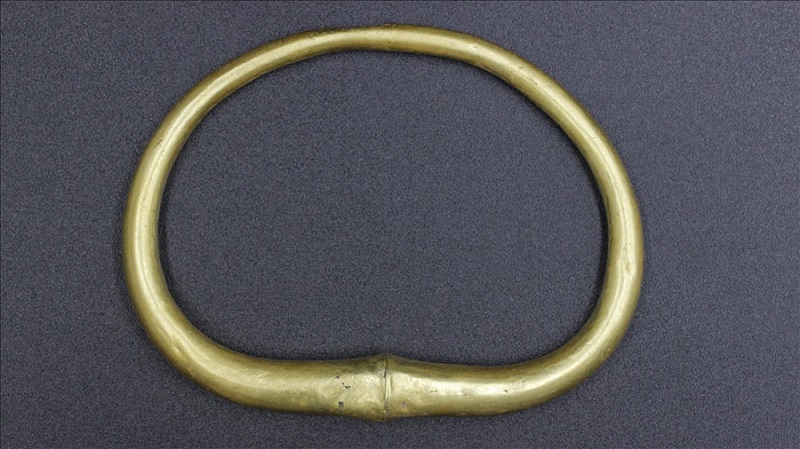
Gold tubular bracelets found at the Mersin site. (Anadolu Agency)
Constantinople would finally come to an end a millennium later, when the Ottoman Empire took over in 1453 AD.
This makes the context of Turkey’s multicultural and diverse history today, with different competing forces vying for power and the establishment of different religious centers, complicated. due to its highly strategic location between Asia and Europe.
And Uzuncaburç, formerly known as Diocaesarea, located in southern Turkey, was the center of worship of the kingdom of Olba, the kingdom that dominated the region during the Hellenistic period (323 BC – 31 BC). . The Kingdom of Olba was a vassal state of both the Seleucid and Roman empires during this period. During Ottoman times, the area was known as Uzuncaburç due to the Hellenistic ruins and the aforementioned tower.
Geographically, Uzuncaburç is a flat plateau located in a mountainous area, facilitating early settlement there. Even during the Hittite period (the ancient Anatolian empire from 1600-1180 BC), the area was believed to be a sacred area. Uzuncaburç continued to grow and develop until the Roman period, when a giant fountain and entrance gate were added, along with cobbled streets, as Arkeo News reported.
One of Alexander the Great’s generals, Seleucus Nikator I, built a temple dedicated to Zeus in the city, which was converted into a church during the Byzantine period.
This rich history and the various undercurrents and powers that have ruled Uzuncaburç for centuries make the region an exciting archaeological paradise that the Turkish government and the people of Mersin wish to promote. . And soon, these beautiful antique jewelry will be on display for all in Mersin Province to see.
